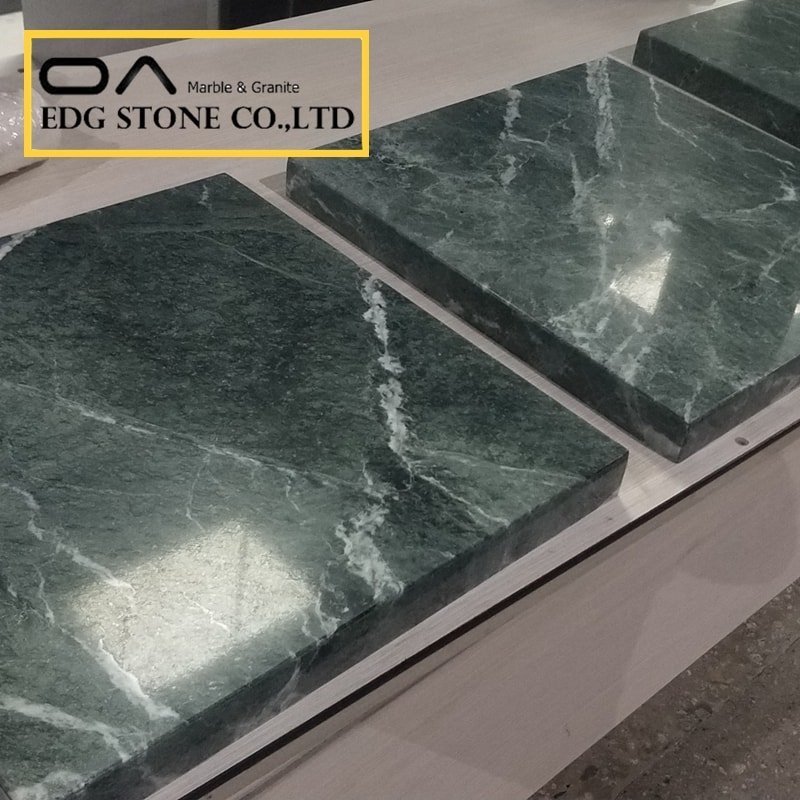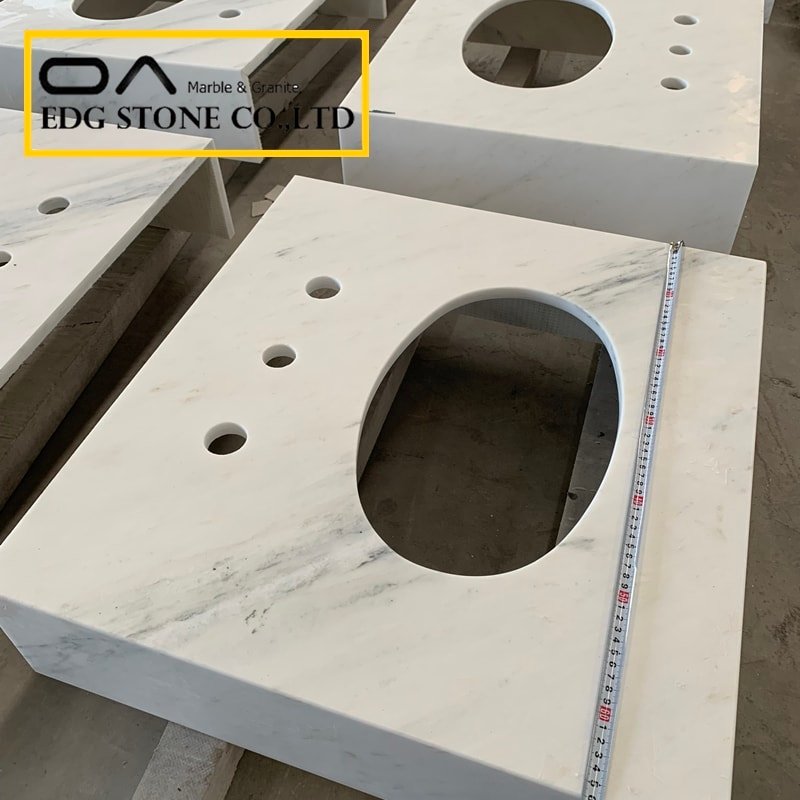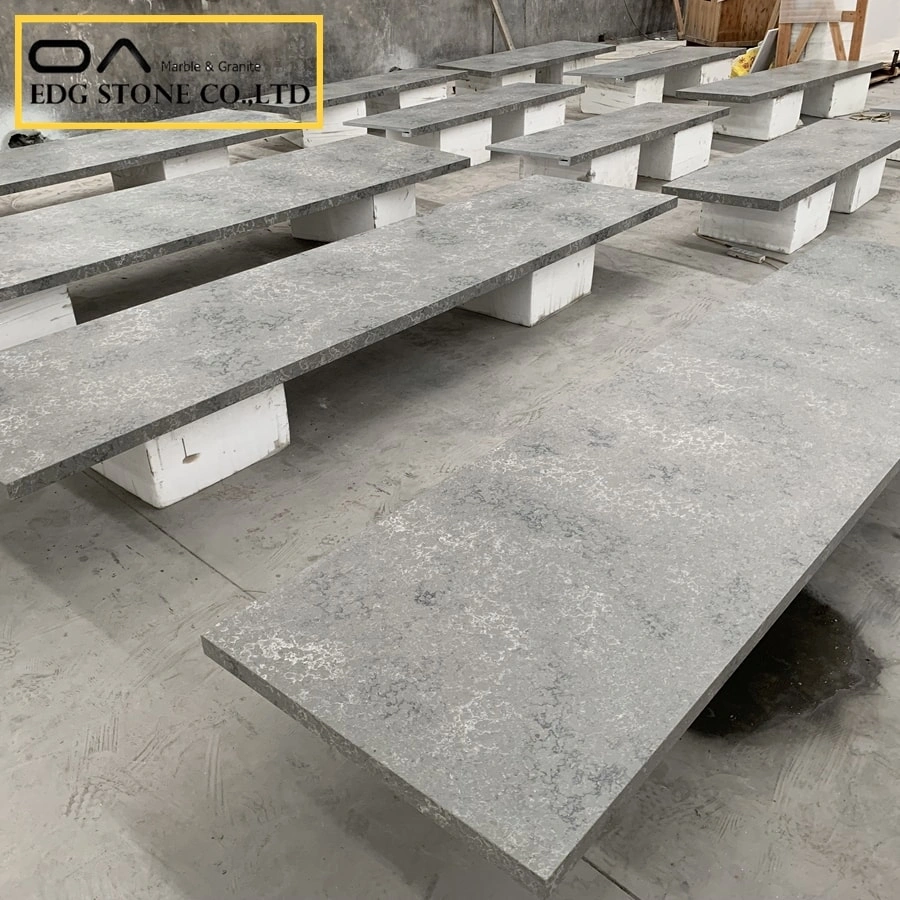In modern home decoration, marble is used more and more extensively, and there are a few places with the highest use rate, that is, our kitchen and bathroom. However, compared to other spaces, the kitchen and bathroom space has been in a relatively humid environment for a long time. Compared with other materials, although marble has relatively good moisture-proof performance, it will still breed mold in a humid environment for a long time, whether it is light-colored or dark-colored marble, and the use of moldy marble will not only affect the appearance but also may affect health.

black white marble vnaity tops
When mold grows on light-colored marble countertops, the following methods can be used:
1. When mold grows on the marble sink countertop and bathroom wall, first stop using water, open the window and dry the sink and bathroom wall.
2. Use a cleaning pad sprayed with emery on one side and dip it in VD stone pigment remover for cleaning. After washing, rinse with clean water and let dry.
Mouldy sinks and bathroom walls will disappear after the above treatments.
The next step is to protect yourself. After drying the wall of the bathroom at the sink, you can use VD stone penetrating repellent for care in about 1 day.
When using marble vanities and bathrooms in the future, keep them ventilated and wipe off any traces of water on the sinks and bathroom walls after use.

Silver Dragon marble table
Mildew growth on dark marble countertops can be treated in the following ways:
1. Take a piece of sponge, soak the sponge, squeeze out the excess water in the sponge, and gently wipe the mold on the marble countertop with the sponge.
2. If the mildew cannot be removed after wiping, you can use heavy calcium carbonate and hydrogen peroxide to make ointment for later use.
3. Then wipe the mildew on the wet marble countertop with distilled water, apply the ointment to the mildew area, wrap the ointment with a plastic bag, and tie the edge of the plastic bag with a strap to seal the ointment on the marble.
4. After the ointment is dry, rinse the surface of the marble with water to remove the ointment, and the mildew on the marble will be removed. If it’s not completely clean, you can do it all over again.
In addition, because the marble countertop has a lot of pores, do not put the dye directly on the marble countertop, so as not to splash the dye and cause staining on the marble surface.
When there are water traces on the marble countertop, it should be removed in time. It is best to use a soft scouring pad or a damp soft cloth to scrub the marble countertop, avoid using cleaning balls and chemical agents for scrubbing.
When marble cabinets grow mold, they can be treated in the following ways:
When using marble cabinets, if not properly maintained, it is easy to breed mold, when the cabinet marble breeds mold, you can also use the above methods to deal with it. However, due to the large oil stain in the kitchen, pay attention to the maintenance of the marble cabinets in the kitchen.

Idian green marble table
To prevent mold in marble cabinets:
1. When cooking, do not put the hot pot and kettle directly on the marble cabinet, so as not to cause damage to the surface of the marble cabinet;
2. Do not touch the marble surface with sharp objects to avoid scratching the marble surface.




